
Khyber Pakhtunkhwa, formerly known as North West Frontier Province (NWFP), is a province of Pakistan. Located in the northwestern region of the country, Khyber Pakhtunkhwa is the fourth largest province of Pakistan by land area and the third-largest province by population. It is bordered by Balochistan to the south; Punjab, Islamabad Capital Territory, and Azad Kashmir to the east; and Gilgit-Baltistan to the north and northeast. It shares an international border with Afghanistan to the west. Khyber Pakhtunkhwa has a varied geography of rugged mountain ranges, valleys, rolling foothills, and dense agricultural farms.

Dir is a region in northwestern Pakistan in the Khyber Pakhtunkhwa, in the foothills of the Himalayas. Before the independence of Pakistan, Dir was a princely state, and it remained so until 1969 when it was abolished by a presidential declaration, and the Dir District was created the following year. The area covers 5,280 square kilometres. In 1996 Dir district was officially divided into Lower Dir District and Upper Dir District.
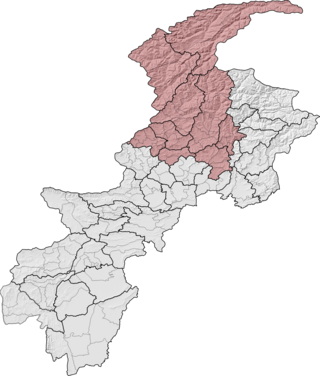
Malakand Division is an administrative division of Khyber Pakhtunkhwa province of Pakistan. Malakand is the second-largest division by population while Mingora, its capital, is the third largest city in the province. CNIC code of Malakand Division is 15.
Dir is a city in the Upper Dir District of the Khyber-Pakhtunkhwa province of Pakistan. It is sometimes known as Dir Khas to distinguish it from the district's name, Dir. It lies along the Dir River, a tributary of the Panjkora River. It is at the base of the Lowarai Pass, the main road to Chitral.

Upper Dir District is a district located in the Malakand Division of Khyber Pakhtunkhwa province of Pakistan. The city of Dir is its district headquarter. Geographically, it is located in the northern part of Pakistan. It borders with the Chitral district on the north, Afghanistan on the northwest, the Swat district on the east, and the Lower Dir district on the south. It shares 40 to 50 kilometers border with Afghanistan.
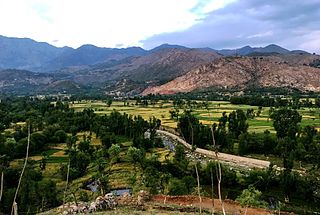
Bajaur District, formerly Bajaur Agency, is a district in the Malakand Division of Khyber Pakhtunkhwa Province, Pakistan. Prior to 2018, Bajaur Agency was the northernmost component of the Federally Administered Tribal Areas (FATA), a semi-autonomous region along the Afghanistan–Pakistan border. In May 2018, FATA was merged into the larger Khyber Pakhtunkhwa Province (KPK) in an attempt to bring stability to the region, redesignating Bajaur Agency to Bajaur District.
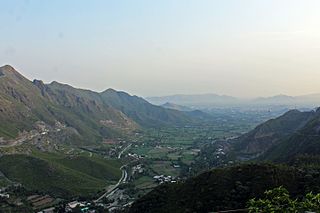
Malakand District is a district in the Malakand Division of the Khyber Pakhtunkhwa province of Pakistan.
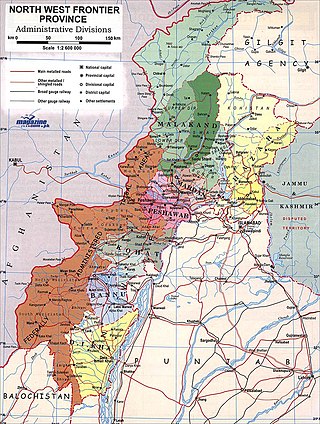
The Malakand Agency was one of the agencies in the North West Frontier Province of British India and later of Pakistan until 2010. It included the princely states of Chitral, Dir and Swat, and an area around the Malakand Pass known as the Malakand Protected Area. The largest city in the area was Mingora, while the three state capitals were Chitral, Dir, and Saidu Sharif. In 1970, following the abolition of the princely states, the agency became the Malakand Division, which was divided into districts, one of which was the Malakand Protected Area, known as Malakand District. In 2000 the Malakand Division was abolished. Despite the constitutional changes since 1970, the expression Malakand Agency is still used, sometimes of the entire area of the former Agency, but more often of Malakand District.
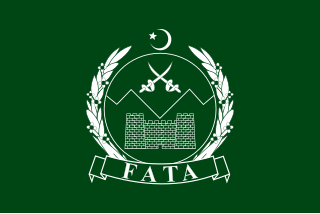
The Federally Administered Tribal Areas, commonly known as FATA, was a semi-autonomous tribal region in north-western Pakistan that existed from 1947 until being merged with the neighbouring province of Khyber Pakhtunkhwa in 2018 through the Twenty-fifth amendment to the constitution of Pakistan. It consisted of seven tribal agencies (districts) and six frontier regions, and were directly governed by the federal government through a special set of laws called the Frontier Crimes Regulations.
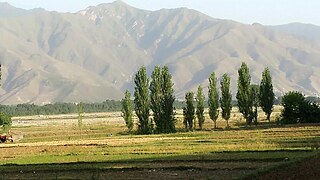
Kuza Bandai is a well developed village in Swat Valley of Khyber Pakhtunkhwa, Pakistan. It is known for its natural environment and also known as an area crossed by Alexander the Great. Later, after the Lal Masjid battle, Kuza Bandai and Bara Bandai became sympathetic to the Taliban movement. The village consists of Yusufzai Pakhtun tribes. It is one of Pakistan's Provincially Administered Tribal Areas (PATA).

The forestry sector of Pakistan is a main source of lumber, paper, fuelwood, latex, medicine as well as food and provide ecotourism and wildlife conservation purposes. 5% of Pakistan's land is covered in forest (2024). The Shangla district is the only district of Pakistan that composed of more than 80% of forest land.

The Twenty-fifth Amendment to the Constitution of Pakistan was passed by the Parliament of Pakistan and the Khyber Pakhtunkhwa Assembly in May 2018. Under the amendment, the Federally Administered Tribal Areas (FATA) and Provincially Administered Tribal Areas (PATA) are to be merged with the province of Khyber Pakhtunkhwa (KP).
The Pakistan Levies, or Federal Levies, are provincial paramilitary forces (gendarmeries) in Pakistan, whose primary missions are law enforcement, assisting the civilian police in maintaining law and order, and conducting internal security operations at the provincial level. The various Levies Forces operate under separate chains of command and wear distinct patches and badges.

Upper Chitral District is an administrative district in the province of Khyber Pakhtunkhwa, Pakistan. Kho people are the dominant ethnic group in the district, forming 99.84% of the total population.
On 31 May 2018, with the application of 25th Amendment, Federally Administrated Tribal Areas ceased to exist, and stood merged into neighbouring province of Khyber Pakhtunkhwa.
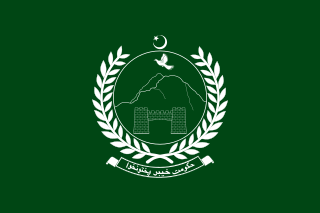
The Flag of Khyber Pakhtunkhwa is the flag of the Province of Khyber Pakhtunkhwa within Pakistan. The KPK provincial flag shows Jamrud Fort, the guardian of the Khyber Pass and mountains in the back. Displaying Pakistani national colours, white and dark Green, with a small Crescent and star at the top to represent the Muslim-majority all of which shows its Islamic heritage and strong ties with the Federation of Pakistan, and the Inscription below in a scroll reads the official name of the province in Urdu, respectively.
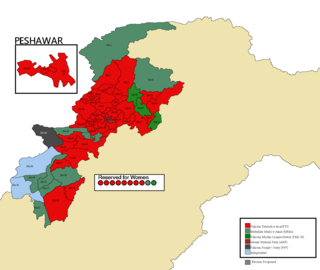
General elections were held in Khyber Pakhtunkhwa on Wednesday, 25 July 2018 to elect the 51 members of 15th National Assembly from Khyber Pakhtunkhwa. The Pakistan Tehreek-e-Insaf (PTI) obtained a landslide victory in the province by winning 37 general seats and increased their margin of victory from 2013. The PTI also won 8 out of 10 reserved seats while the Pakistan Muslim League (N) (PML-N) and Muttahida Majlis-e-Amal (MMA) won 1 reserved seat each.
Kohistan is a mountainous region located in the northern Pakistan. It consists of Indus Kohistan, Swat Kohistan and Dir Kohistan in the Khyber Pakhtunkhwa province, with a total area of 11,531 km2.















